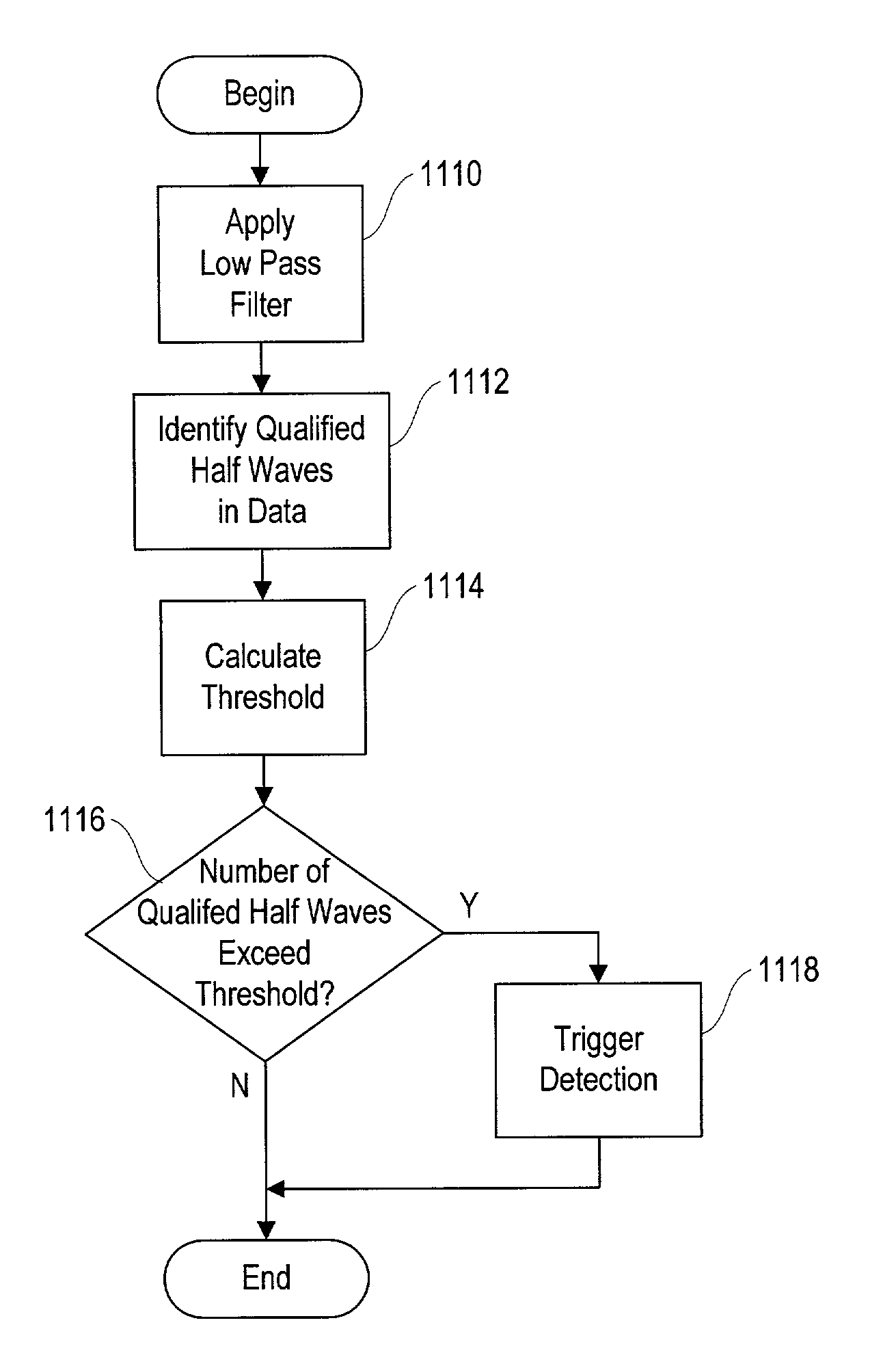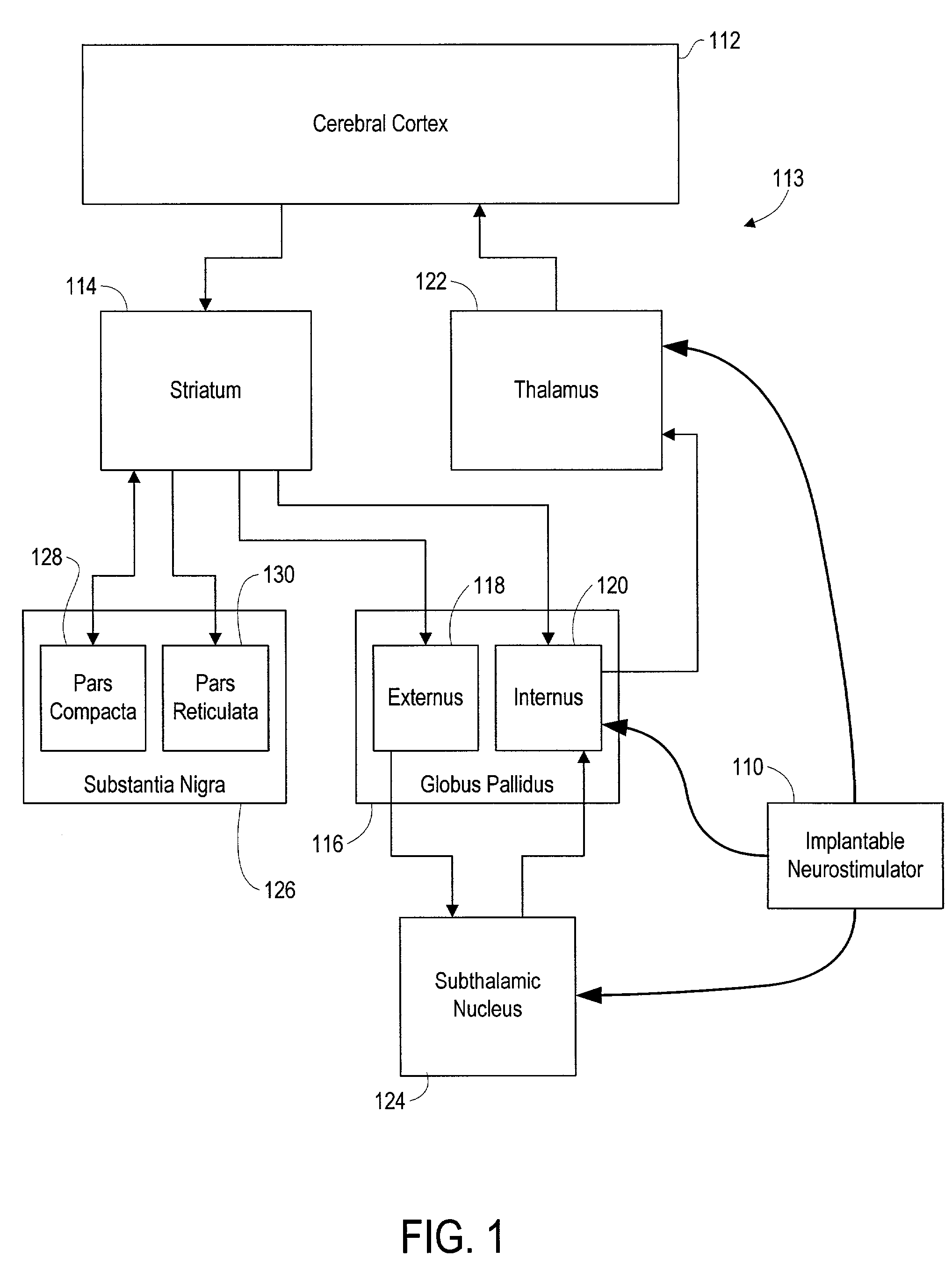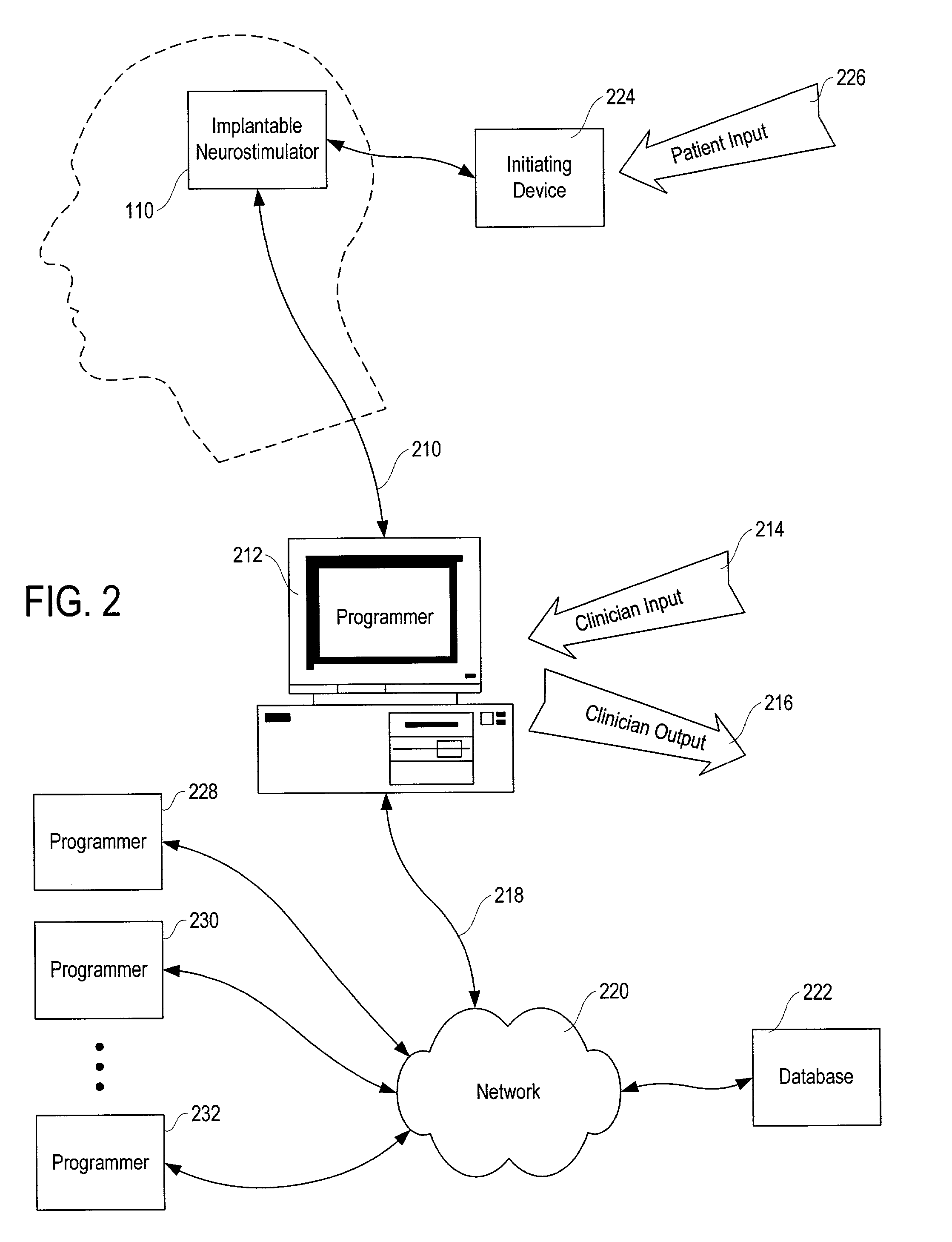Responsive electrical stimulation for movement disorders
a technology of responsive electrical stimulation and movement disorders, applied in the field of responsive electrical stimulation for treating movement disorders, can solve the problems of inability or reduced ability to move, uncontrolled or poorly controlled movement, debilitating a large number of individuals worldwide, etc., and achieve the effect of decreasing involuntary motion tremors and other symptoms
- Summary
- Abstract
- Description
- Claims
- Application Information
AI Technical Summary
Benefits of technology
Problems solved by technology
Method used
Image
Examples
Embodiment Construction
[0043]The invention is described below, with reference to detailed illustrative embodiments. It will be apparent that a system according to the invention may be embodied in a wide variety of forms. Consequently, the specific structural and functional details disclosed herein are representative and do not limit the scope of the invention.
[0044]FIG. 1 illustrates several portions of the human brain that are believed to be the primary structures involved in voluntary and involuntary movement. An implantable neurostimulator 110 according to the invention, which will be described in additional detail below, interacts with these structures to control movement disorders.
[0045]Movements are initiated and executed via the cerebral cortex 112, in particular the motor cortex. However, movements are controlled and regulated through inhibitory inputs from the basal ganglia 113, a collection of brain structures 114–122 described in general below.
[0046]The striatum 114, which includes the caudate ...
PUM
 Login to View More
Login to View More Abstract
Description
Claims
Application Information
 Login to View More
Login to View More - R&D
- Intellectual Property
- Life Sciences
- Materials
- Tech Scout
- Unparalleled Data Quality
- Higher Quality Content
- 60% Fewer Hallucinations
Browse by: Latest US Patents, China's latest patents, Technical Efficacy Thesaurus, Application Domain, Technology Topic, Popular Technical Reports.
© 2025 PatSnap. All rights reserved.Legal|Privacy policy|Modern Slavery Act Transparency Statement|Sitemap|About US| Contact US: help@patsnap.com



